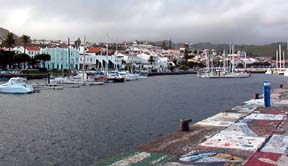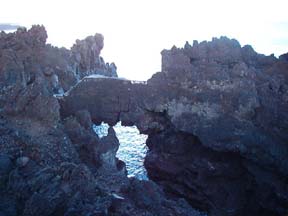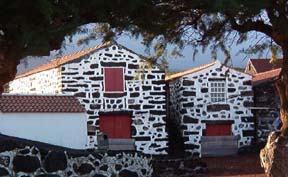

By
Don and Linda Freedman
Search
TheTravelzine
TheTravelzine Group
Access Your Mail
Don's
Gallery
Packing
Hints
Planning
Tips
Cities
Links
Links
LINKS TO OUR TRAVELOGUES
Argentina, Buenos Aires - Jan-Mar 2010
Argentina, Buenos Aires - Jan-Mar 2009
Argentina, Buenos Aires - Jan-Mar 2008
Austria - Fall 2005
Belgium, Brussels - Fall 2000
Canada - Summer 2002
Canada - Summer 2001
Canada - Summer 2000
Czech Republic - Spring 2000
France - Fall 2002
France, Paris - Fall 2000
France, Paris - Spring 1999
France, Lyon - Spring 1999
Germany, Berlin - Fall 2009
Germany - Fall 2002
Germany - Spring 2000
Germany - Fall 1999
Greece - Fall 2012
Greece - Fall 1999
Greece - Fall 1997
Hungary - Spring 2000
Israel - Fall 1999
Italy - Winter 2007
Italy - Winter 2006
Italy - Winter 2005
Italy - Winter 2004
Italy - Winter 2003
Italy - Winter 2001
Italy - Fall 1998
Italy - Fall 1996
Netherlands - Spring 2000
Portugal, Azores - 2019
Portugal, Azores - 2018
Portugal, Sao Miguel & Lisbon - 2017
Portugal, Azores - 2017
Portugal, Azores - 2016
Portugal, Azores - 2015
Portugal, Azores - 2014
Portugal, Azores - 2013
Portugal, Azores - 2012
Portugal, Azores - 2011
Portugal, Lisbon - 2011
Portugal - Fall 2006
Portugal - Fall 2004
Portugal - Fall 2003
Portugal - Fall 2001
Portugal - Spring 1999
Portugal - Spring 1997
Slovakia - Spring 2000
Slovenia - Spring 1999
Slovenia - Fall 1996
Spain, Barcelona - Winter 2006
Switzerland - Fall 2002
Switzerland - Spring 2000
Switzerland - Spring 1999
Switzerland - Fall 1998
Switzerland - Fall 1997
Switzerland - Spring 1996
U.S. Florida, Key West - Fall 2006
U.S. Florida - Spring 2001
U.S. Maine - Summer 2002
U.S. Massachusetts - Summer 2003
U.S. Massachusetts - Summer 2002
U.S. Massachusetts - Summer 2001
U.S. New York State - Fall 2005
U.S. New York State - Summer 2004
U.S. New York State - Summer 2003
U.S. New York State - Summer 2001
U.S. Washington,DC - Spring 2000
PORTUGAL
Fall 2003
Azores | Madeira | Lisbon | Algarve
SãoMiguel (1) | Terceira | Faial and Pico | São Miguel (2)
Faial
The SATA flight from Terceira to Horta, the largest city on the island of Faial, is only 30 minutes. Again an excellent well served flight and a very efficient, rather new airport at Horta.
We dropped our bags at Hotel Horta which sits high above the city with nice views of the marina, the sea and the island of Pico in the distance from the balconies of all the rooms. Our room was a good size but repair and renovation were overdue.
Life in Horta begins and ends at
the marina, where sailing ships and yachts stop on their
trips across the North Atlantic.  The hub of the
activity is at Peter Cafe Sport, the name brought to life
by the zillion of sports pennants on the walls and
ceiling. This is the meeting place for yachtsmen, locals
and visitors to gather, enjoy a drink, and do a little or
lot of socializing. There is a tempting menu offering
sandwiches to more serious offerings. Lunch time business
was brisk but we did manage to find seats and enjoy a
very fine swordfish plate. "Peter" has been
around since 1918. The seamen passing thru loved the
experience and spread the word. The art of Scrimshaw
started with these seamen as they looked for things to do
while at sea for long periods. Over the years Peter's
family began to collect these works of art. This
incredible collection is on display in the Scrimshaw
Museum upstairs from the Cafe.
The hub of the
activity is at Peter Cafe Sport, the name brought to life
by the zillion of sports pennants on the walls and
ceiling. This is the meeting place for yachtsmen, locals
and visitors to gather, enjoy a drink, and do a little or
lot of socializing. There is a tempting menu offering
sandwiches to more serious offerings. Lunch time business
was brisk but we did manage to find seats and enjoy a
very fine swordfish plate. "Peter" has been
around since 1918. The seamen passing thru loved the
experience and spread the word. The art of Scrimshaw
started with these seamen as they looked for things to do
while at sea for long periods. Over the years Peter's
family began to collect these works of art. This
incredible collection is on display in the Scrimshaw
Museum upstairs from the Cafe.
High up at Conceicao, just out of
town, we stopped for a special photo moment of the Horta
coastline and the beach of Praia do Almoxarife below.
Driving counter clockwise around the island to Ponta dos
Capelinhos, on the west tip, took us by comfy seaside
villages with their white washed homes many of which were
trimmed in bright blues and yellows.
[Back
to Top]
On Sept. 27, 1957 a submarine volcano
erupted on the west coast. There were four stages during
the eruption the last one ending Oct.24, 1958. This
eruption of Capelinhos enlarged the island by 2.4 square
km. It's a barren sight of lava sand leading to the
central vent of the volcanic cone which is being eroded
by the strong winds. Amazingly the lighthouse of
Capelinhos resisted the eruption and serves as the best
memory of the biggest volcanic eruption that took place
in the 20th century in the Azores.
The Alto dos Cavacos Capelo in Horta produces and sells the work of local artisans. The amazing craft of working with fish scales is intriguing. The fishermen scrub them off, wash and dye them in various colors, and these ladies painstakingly turn them into lovely pieces of jewelry and art. The shop also has a photo collection documenting the stages of the Capelinhos eruption that blows the mind.
Just off the coast of Horta, Monte da Guia offers a spectacular view of Faial and Pico. High atop is the Chapel of Tomas of the Fisherman. During the first week of August a procession starts here and goes down hill, where the religious icons being carried are placed onto waiting boats which proceed around the mountain.
We found an excellent internet service, "Hortanet" at Rua Walter Bensaude 11. It was clean, comfortable and reasonably priced and the owner a delightful guy. He recommended the Restaurante Captilio just down the street which was very good. After delicious bread and cheese we had the mandatory vegetable soup followed by wonderful grilled fish fillets and boiled potatoes, cabbage, carrots and Kale.
Now comes the tough part, walking up the long steep hill to the hotel on a very full stomach. Guess it worked out well because we were hungry enough in the morning to enjoy the fine quality buffet breakfast in the hotel.
Pico
The 07:45 boat got us to the island of Pico at 08:15. The boat was old but well kept with comfortable sitting inside and standing room outside. It was raining when we left but it cleared by time we arrived in Madalena on the north west corner of the island.
Pico was formed by 3 volcanic
eruptions and beauty is everywhere. Lava rock homes, lava
rock formations, lava rock covered by rich, lush
vegetation, vineyards, and orchards all attest to the
brilliance and determination of nature and man.
[Back
to Top]
Our journey started just north of Madalena in the wine growing area Cais do Mourato, Cachorro, Lajido and Arcos. Cais do Mourato is a village of ancient homes made of black lava rock with the windows and door openings set off in whitewash and brightly colored timber. Each house had a wine cellar. The owners now use them as summer homes. There are natural swimming pools along the shore and the green grounds are well kept and attractive.
 As we drove along, the sides of the road
were filled with lava stone walls arranged in half
circles protecting the fig trees. Approaching Cachorro
the sight of totally black buildings high over the sea
was stunning. In addition, these homes were built without
glass windows. They were built defensively, to protect
from the weather and from the pirates. Down at the sea
there are incredible lava rock formations piled high in
intricate shapes - like a moonscape, with the waves and
waters rushing thru and bouncing in all directions. It
was mesmerizing, and a perfect time to stop at a shop and
sample the local wines. We had already enjoyed the Terras
de Lava white and red on other occasions and now we
sampled the liqueurs, which come in many different
flavors. My favorite was fig.
As we drove along, the sides of the road
were filled with lava stone walls arranged in half
circles protecting the fig trees. Approaching Cachorro
the sight of totally black buildings high over the sea
was stunning. In addition, these homes were built without
glass windows. They were built defensively, to protect
from the weather and from the pirates. Down at the sea
there are incredible lava rock formations piled high in
intricate shapes - like a moonscape, with the waves and
waters rushing thru and bouncing in all directions. It
was mesmerizing, and a perfect time to stop at a shop and
sample the local wines. We had already enjoyed the Terras
de Lava white and red on other occasions and now we
sampled the liqueurs, which come in many different
flavors. My favorite was fig.
Lava covers the ground and where vegetation has not taken over you can see ruts etched in many places that indicate the routes the wine wagons took. As we approached São Roque do Pico we saw indications of old homes being restored; new building is tightly controlled, as well the availability of rural accommodations which are very popular on the island.
We visited the whaling museum and
the last whale factory in São Roque do Pico where we
learned everything about whaling we ever wanted to know,
from the hunt to the melt.
[Back
to Top]
Further along the coast is the natural forest reserve of Praina de Cima. This is a park and recreation area of rare beauty and care. Enjoy a walk, a good hike, rest in one of the picnic areas and if you like use one of the barbecues (wood provided). Toilets are strategically located. At the nearby shorefront there is a natural swimming area if you get the urge. Forest Rangers are around should you require help or information.
n nearby Praina there are some very nice
ancient mansions now being used for rural accommodations.
This fishing village also has natural pools at the shore.
Another neat village is Sant Amaro, where they used to
build boats, but today boat repairing is the trade. Here
we found the Escola Regional de Artesanato (regional arts
and crafts school). It was founded by the Neves sisters
to preserve and spread the culture of Pico's people. The
highlights of the work are fish scale art, lace, dolls
made of corn, and jams. Adjacent to the school is a
preserved old house with its original furnishings.
[Back
to Top]
At the south side of the island we
found lush greenery compared to the lava in the north,
each gorgeous in its own way. As we approached the old
whaling town of Lajes we stopped above in Arrife for a
panorama of the coastline. The cove of Lajes attracted the first
settlers to Pico. There is a monument to them at the end
of the pier at the Marina. There is another whaling
museum here which is housed in three former boat houses.
A varied collection of exhibits depicts the history of
whaling on the island. Whale watching is a very big
tourist attraction and Lajes is a good place to get
started. A few blocks from the Marina at Largo do S.
Pedro we stopped for lunch at Cafe/Pub/Restaurante Lagoa.
It's getting boring but once again it was bread, fresh
cheese, vegetable soup and swordfish. Don't fight a good
thing.
After a leisurely lunch we had just enough time to get back to Madalena and the 15:45 boat to Horta and then to the airport to catch our flight to Ponta Delgada.
Azores | Madeira | Lisbon | Algarve
Search TheTravelzine | TheTravelzine Group | Don's Gallery
Packing Hints | Planning
Tips | Cities
Links
All pages on TheTravelzine.com©Copyright 1996-2020 Don & Linda Freedman